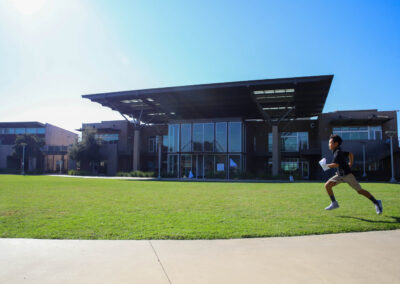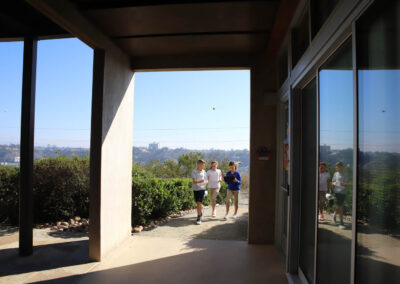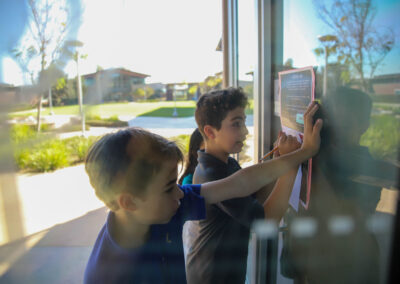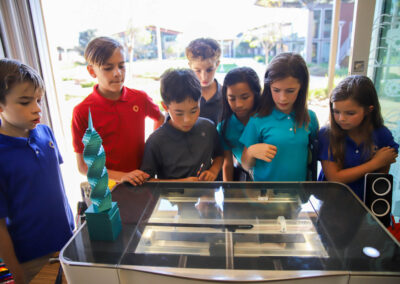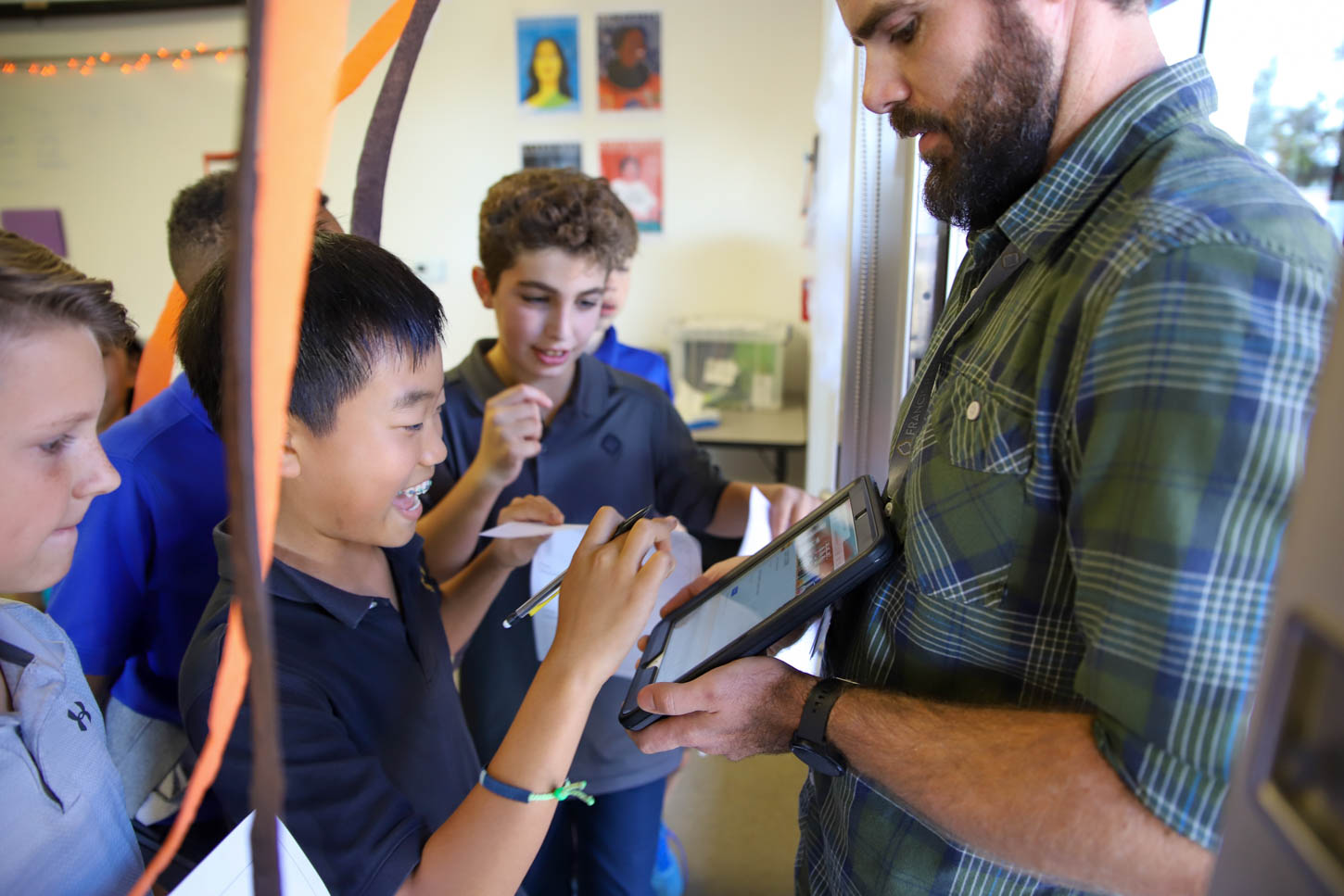
“Agents.”
Middle School Math teacher Cameron Townsend addresses his Grade 6 class.
“We need your help,” he reads off a prepared script. “Something went wrong with our climate control system in the bio-storage facility. The temperature is rising fast and if it gets too warm, our samples of the Y2K super virus will activate and become airborne.”
“To stop this, we need to enter an override code and reset the system,” he continues. “Unfortunately, the code has been scattered across multiple locations. You will need to find these pieces and bring them back to this room.”
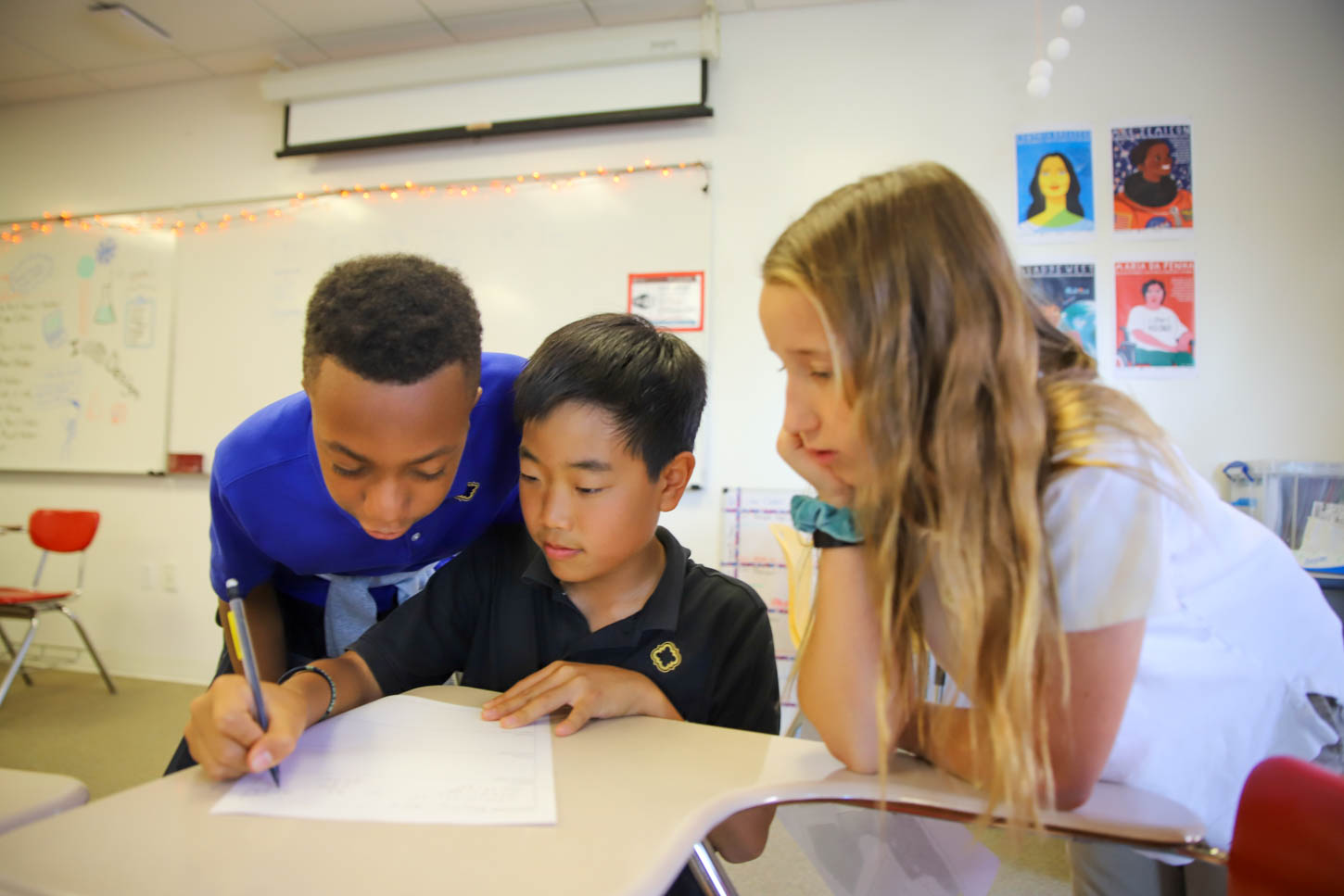
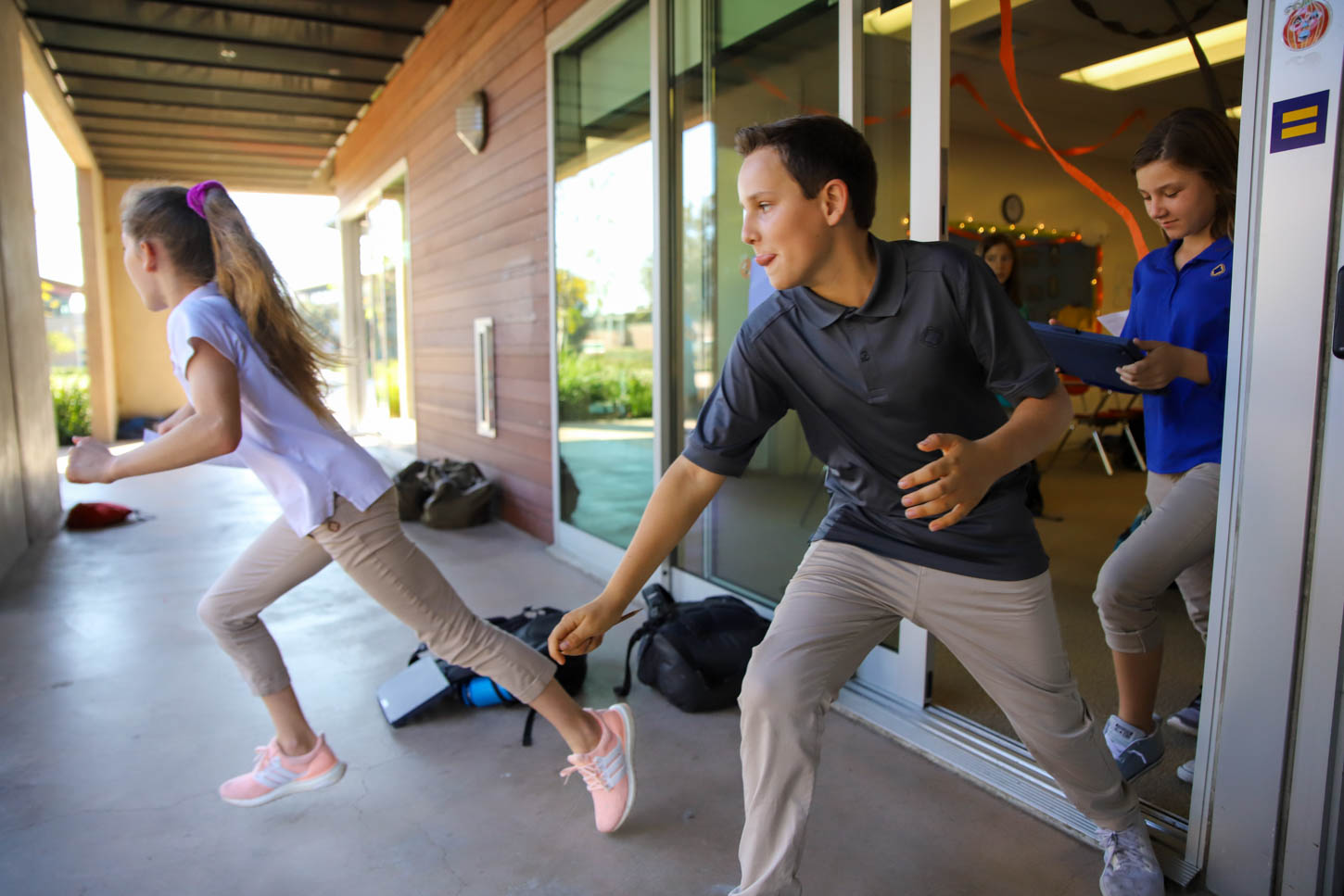
It’s the beginning of G Block on Thursday, Nov. 7, and Cameron is setting the stage for a recently-created lesson he simply calls “Math Adventure.” It’s an interactive lesson–part scavenger hunt and part escape room–that will take the students around Parker’s Linda Vista Campus solving a series of problems necessary to decrypt the code needed to reset the system and “save humanity.”
“I want the students to use problem-solving skills in a collaborative sense to achieve a series of goals,” Cameron explains. “Problem-solving should include critical thought and logical reasoning. Gamification has been used in schools across multiple subjects for a long time now. I wanted to try my hand at it and show them that there are a variety of ways to use their math skills to solve real problems in a practical way–even if it is just a fictional story.”
The students are provided a special worksheet and a map to track their progress. The adventure begins in the classroom, where four teams of 3-4 students are tasked with solving a problem that will unlock their class door. Cameron holds a tablet by the door, as the students anxiously test out their answers until they clear the first hurdle.
Upon receiving confirmation of a correct answer, the lead group bolts from the classroom and sprints to the Centennial Fountain near Lancer Lawn, where their next problem awaits taped on construction paper to the concrete bench.
They gasp for air as they huddle around to collectively read:
“This looks like it might be part of the code, but it seems to be encrypted with another algorithm,” the paper states. “If I can evaluate this correctly, it should lead me to the next piece.”
2(2)24+(1-2)
Hot on their heels, the second group gathers around to view the problem.
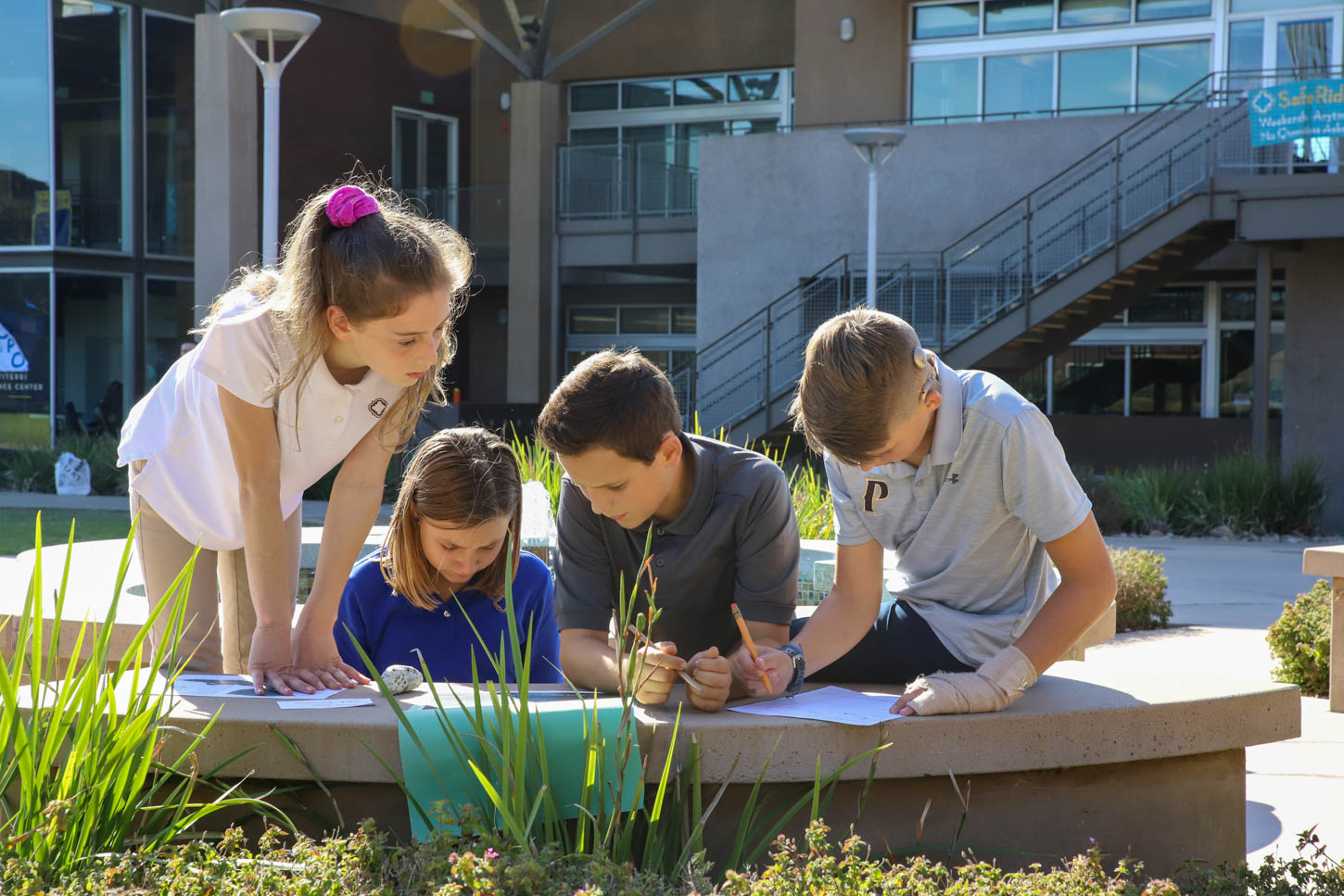
During the next half-hour, the groups pinball around campus, from the Middle School office, to the Social Justice Garden, to the library, to the design lab adjacent to their classroom, where they must solve a problem to calibrate the laser cutter, which then produces and cuts a wooden “authenticator” key for each group. The key is needed to crack the last clue.
“I want my kids to experience math in a different way,” Cameron says. “I want them to get out of the classroom, run around, work together, and solve puzzles using the knowledge they already have.
Middle School Math teachers Bernice Alota and Maggie Miller also ran the lesson with their classes.
“It definitely teaches the kids a lot about what it means to collaborate, how to be patient, how to help those who may not get things as fast as you, and how to put the competition in its proper place,” says Bernice. “It is also really neat to see the kids discover new parts of the Campus.”
“The experience is a fun way for the students to practice math and to use their “tools” to accomplish a task,” Maggie added. “Mistakes lead students down the wrong path–literally–and we are able to debrief those later on back in the classroom. It creates a lot of teachable moments, both through their successes and setbacks.”
Cameron’s Learning Targets:
- Be able to identify the base and exponent of an exponential expression
- Be able to rewrite an exponential expression as an algebraic expression and vice versa
- Understand what “squared” and “cubed” means

